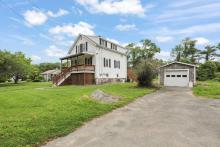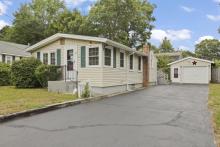School officials introduce coding to elementary schools
Fourth grader Madison Sylvia organized blocks on a computer program. The arrangement of the blocks sent a character on an adventure through a virtual world based on the popular Minecraft video game.
"I know when [the mobs] spawn, they move forward," the DeMello Elementary student said, in Minecraft jargon.
While Sylvia was certainly enjoying the exercise, she was actually learning the basics of computer coding.
Instructional technology teacher Josh Rodrigues took advantage of the international Hour of Code this week, which encourages students globally to start coding between December 5 through 11.
While some DeMello teachers have dabbled with lessons in the classroom, Rodrigues decided to make coding a weeklong, before-school event.
"I wanted to give [students] a space where it’s like an open playground to code," he said. His event attracted nearly 50 students on December 6, the first day of the event at DeMello.
Each student was given a Chromebook to practice online at code.org, which offers themed activities — such as Minecraft, or Disney's Moana — to get students into the program thinking, said Rodrigues.
"When parents drop their kids off, they have faith that the schools will provide 21st-century education," said Rodrigues. "That's my objective. What would I want my kids to be doing in school?"
Rodrigues said at this level, students aren't typing the code out, as most can't even type proficiently yet. Instead, they organize instructional blocks, such as "move forward" and "turn right," to achieve a defined outcome. Through the middle and high school levels, they'll move on to use coding languages such as C++ and Python.
For some students, like Sylvia, coding comes as a natural skill that they want to pursue. She said she's good at science and math, and when asked if she wants to do coding when she's older, she nodded enthusiastically.
"I've always wanted to experiment. I just like everything," she said. "Either [coding] or YouTube," she added, explaining that she has her own YouTube "channel" already.
For other students, like Jacob Sylvia, coding is a learning process. The eight-year-old has never coded before, but he's already forming a basic understanding.
"It's when you try to make something follow what you did [with the blocks]," he explained while playing a Moana-themed game. "I'm trying to get the right combination to get all the fish."
At the end of the 45-minute morning session, students stacked their laptops into neat piles and headed for homeroom, but Rodrigues hoped that wasn’t the end of their interest in coding.
"I'm hoping they leave with an excitement toward coding, and technology in general," he said.
Rodrigues said that coding not only builds interest among students, but also helps them focus their energies. He expects more students as the week goes on and students share their experiences with friends.
Rodrigues is also upping interest in science, technology, engineering, and math (STEM) with Makerspace clubs that provide students with hands-on activities for design and engineering. After a test run this semester, he said another club will hopefully launch after winter break.
Rodrigues is also looking into robotics (similar to ones run at the high school level) and other coding opportunities for his students.

















